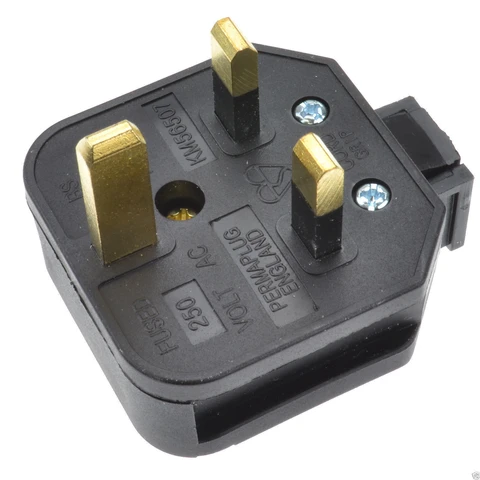What is the importance of a three pin plug?
why some jack has 3 plug? i know there are negative and positive point in an electricity component. then what’s the necessary of the 3rd pin?
The third pin is the protective earth. It is connected to the chassis of the equipment so that if there is a fault that cause the voltage getting to the chassis then the current escapes through the ground pin to the ground possibly tripping the circuit breaker.
There are three four classes of equipment.
Class 0 i.e. ungrounded. These are obsolete and should not be used, especially in rooms where there is ground available.
Class I i.e. grounded. These have the ground plug that does the above thing. If they are connected to an ungrounded outlet (like ins possible in many European countries) they act as class 0 equipment. Kitchen equipment, washing machines etc. are grounded so are some tools, especially older ones. Computers also typically are grounded. Note mixing grounded and ungrounded equipment is especially dangerous as if an ungrounded one fails and one touches it an a grounded equipment one can get a fatal shock. That is why for example schuko socket does snot accept an ungrounded plug.
Class II: Double insulated. These have a second level of insulation. This typically mean they have a plastic case. They therefore do not need grounding and are safe with every type of socket. These are by far the most common type.
Class III: Low voltage equipment. These, like laptops and toys have low voltage so they are safe. They do have a power supply that is Class I or II though.
There are two methods to do grounding: many countries use a pin on the plug and hole on the socket. Schuko and the French one uses pin (or comparable obstacle) on the socket and matching hole or comparable in the plug. These have interesting consequences to the switching from ungrounded to grounded. The ole in socket makes switching easy but dangerous as old equipment can be still used. The pin in socket makes switching harder but safer as one has to junk all old equipment if one plays by the rules. Denmark which uses a hole in socket switched in the 70s while Finland and Sweden which use schuko switched only in the 90s. (I am here talking of dry rooms.) British were always grounded so they had no such problem.



